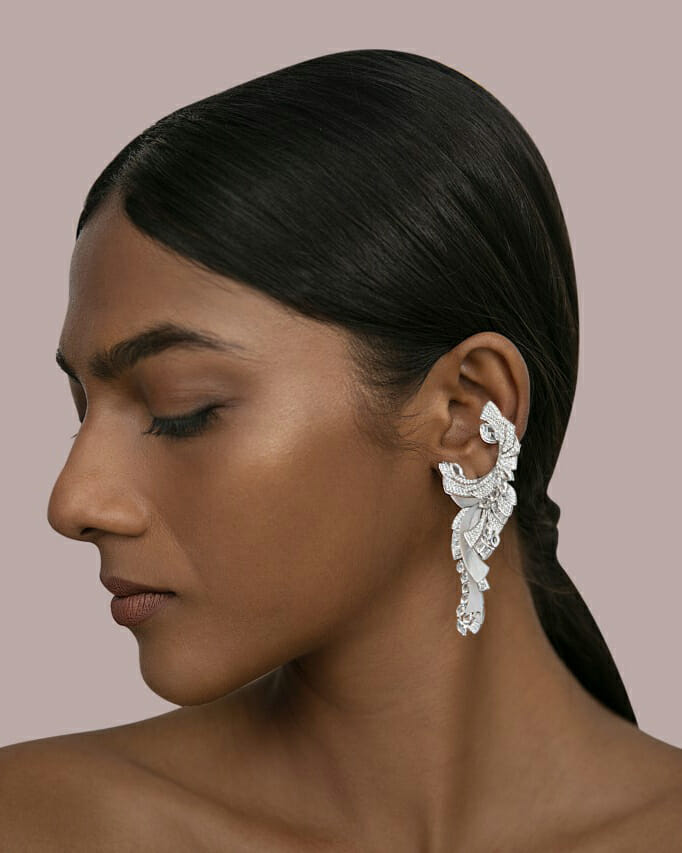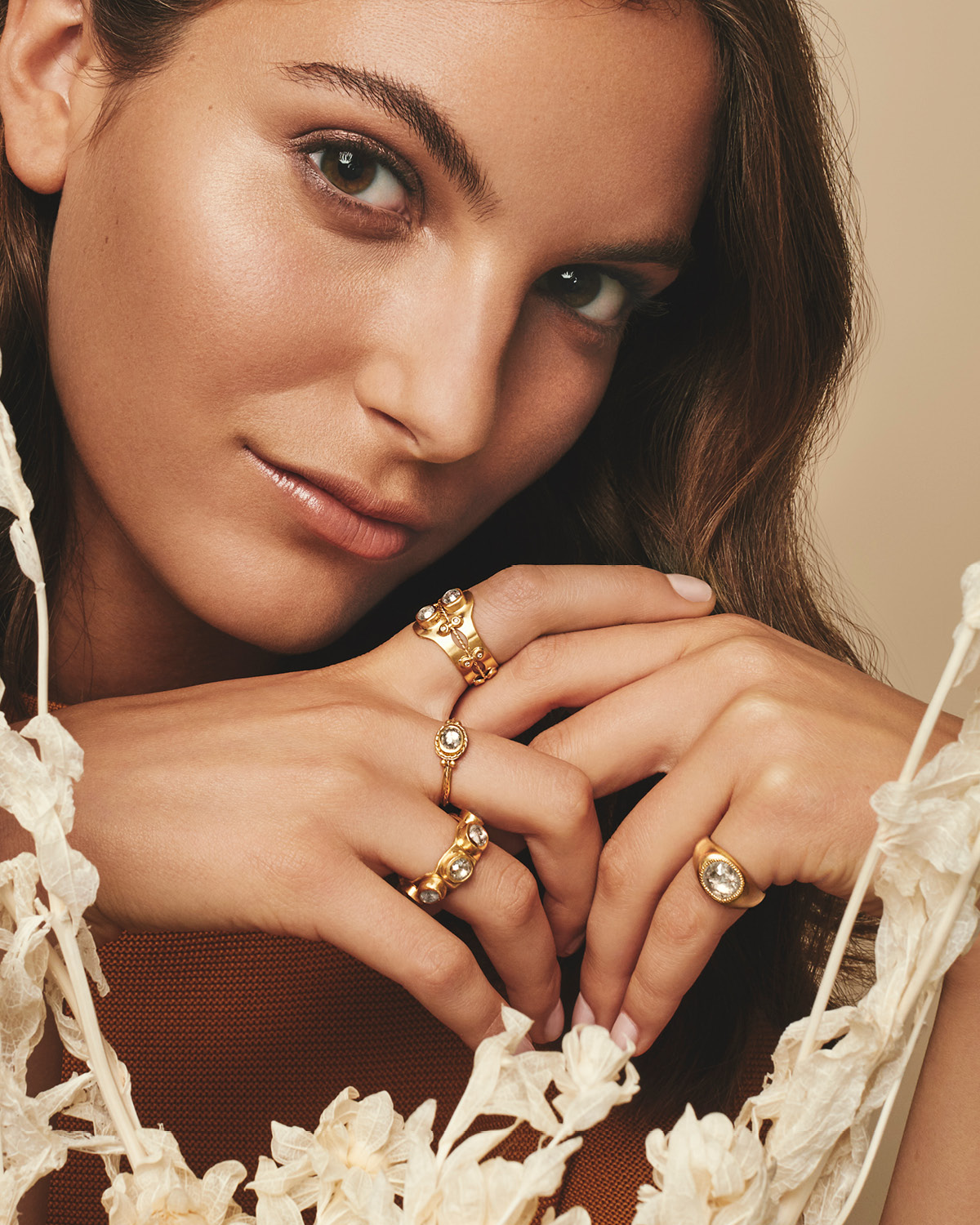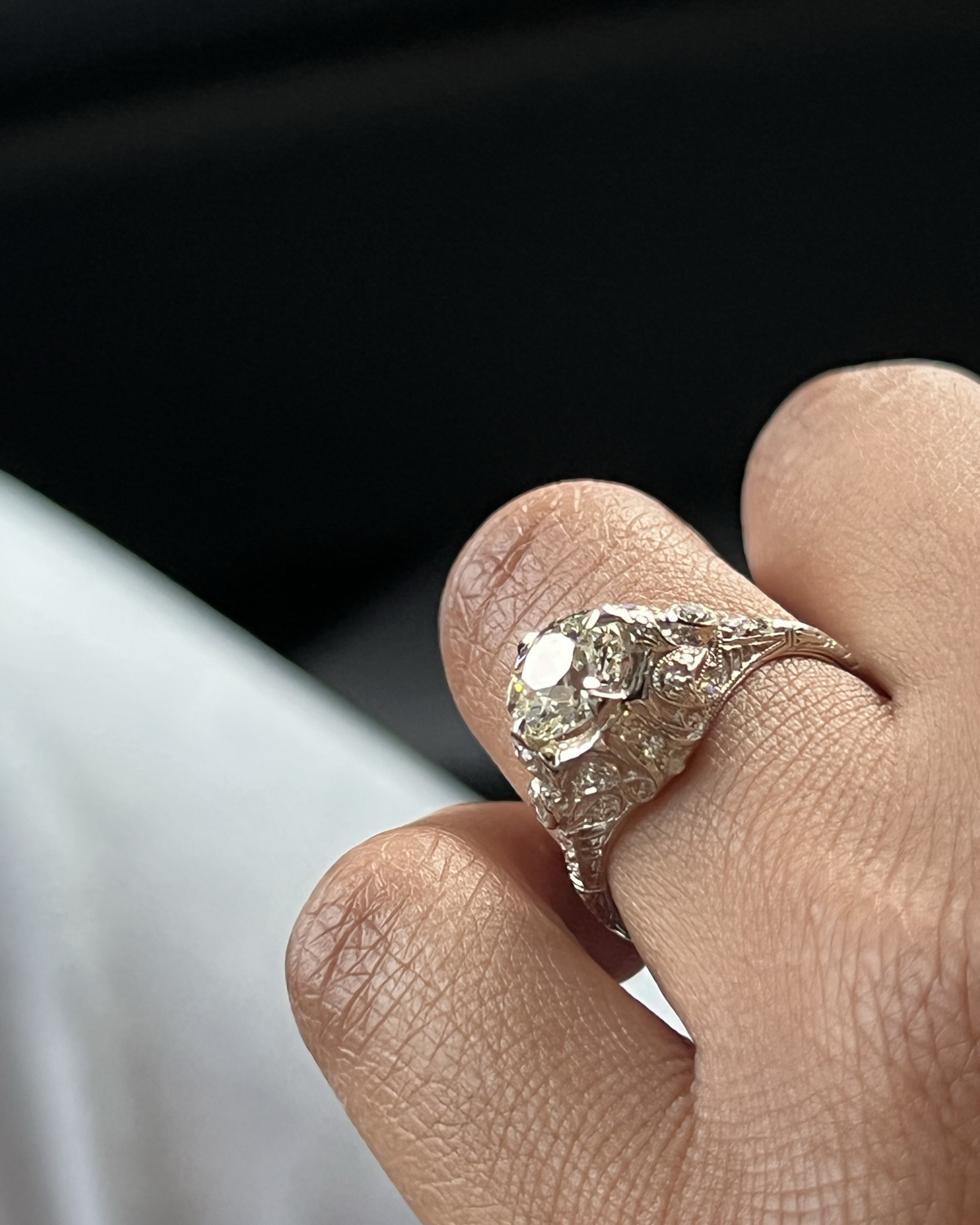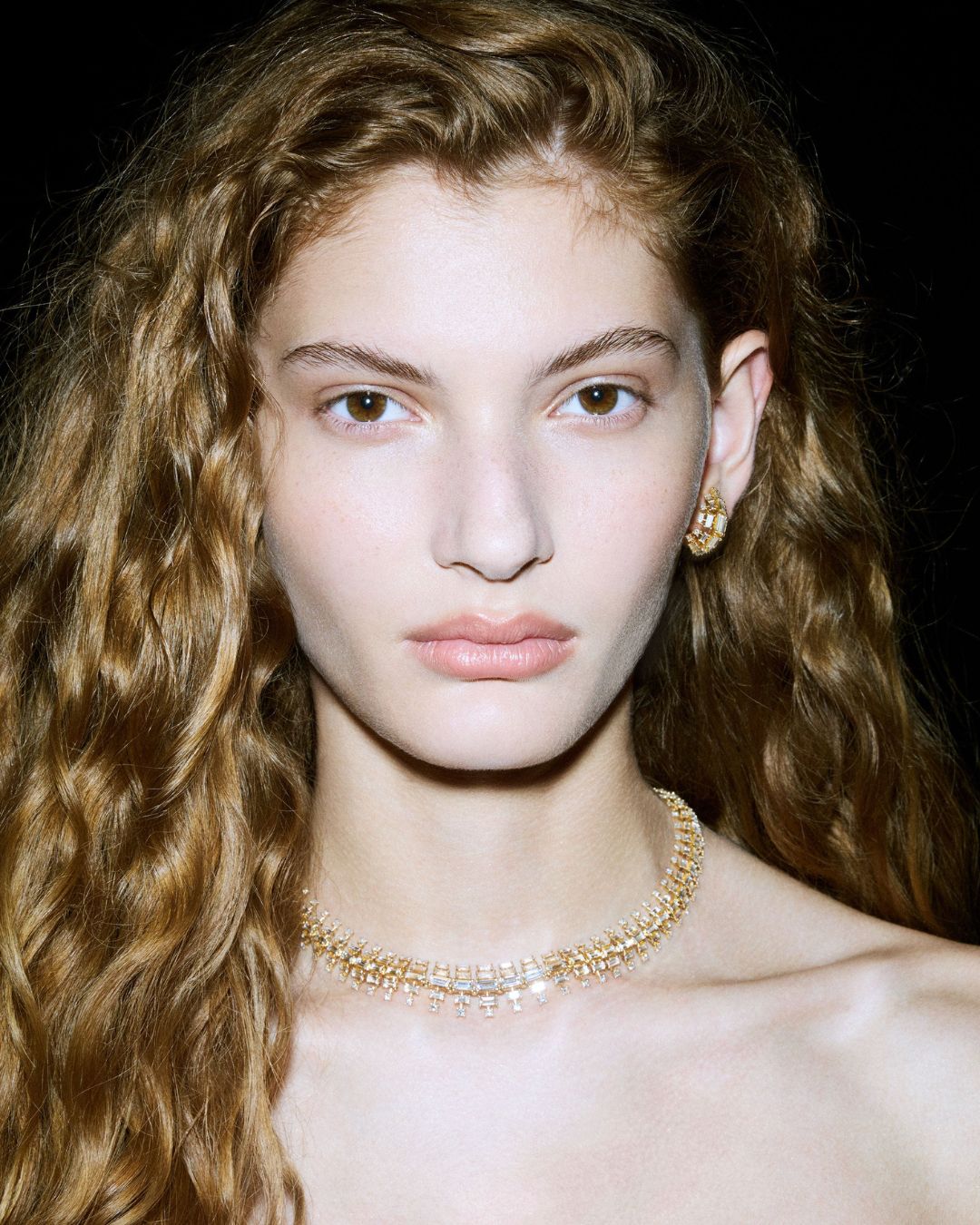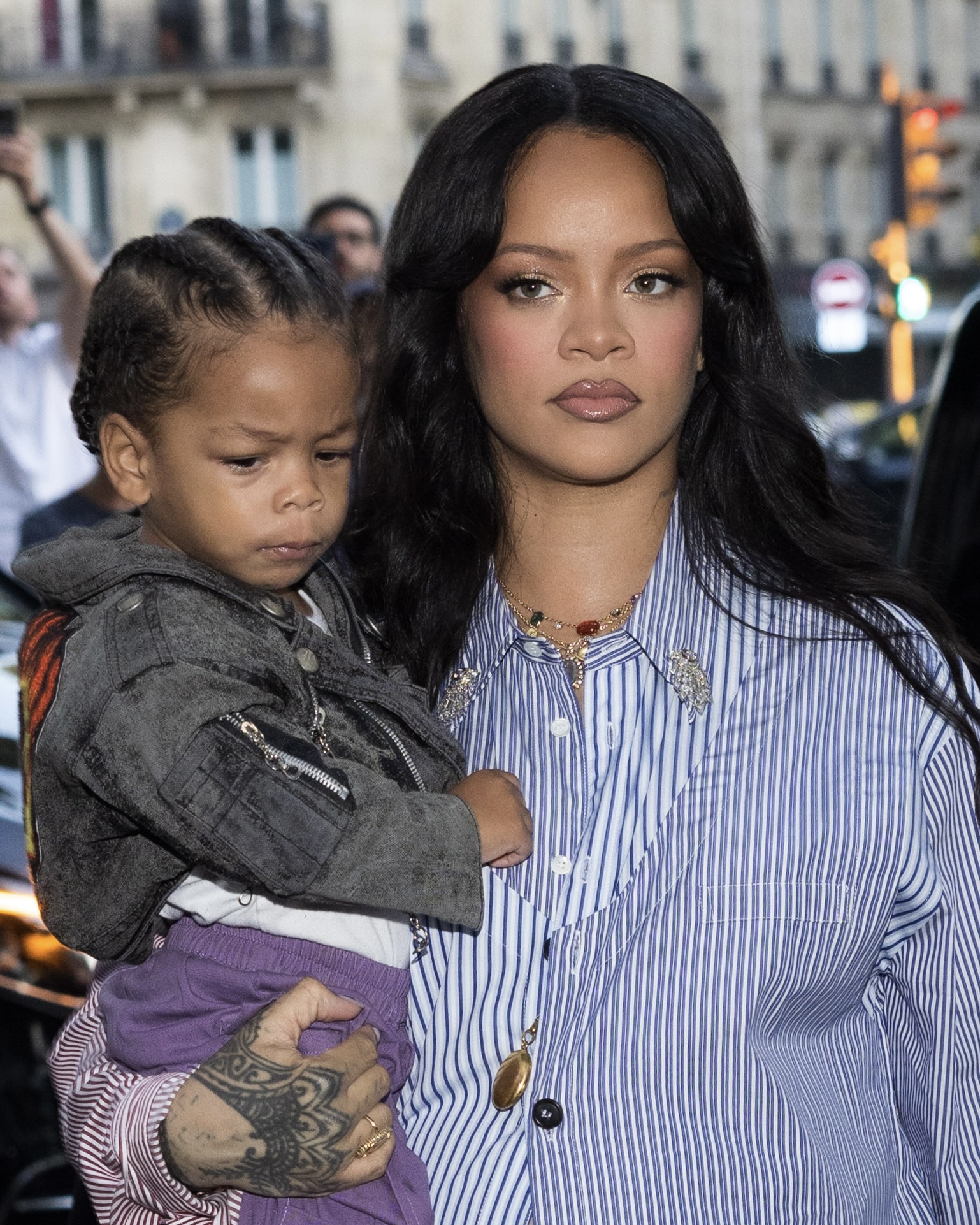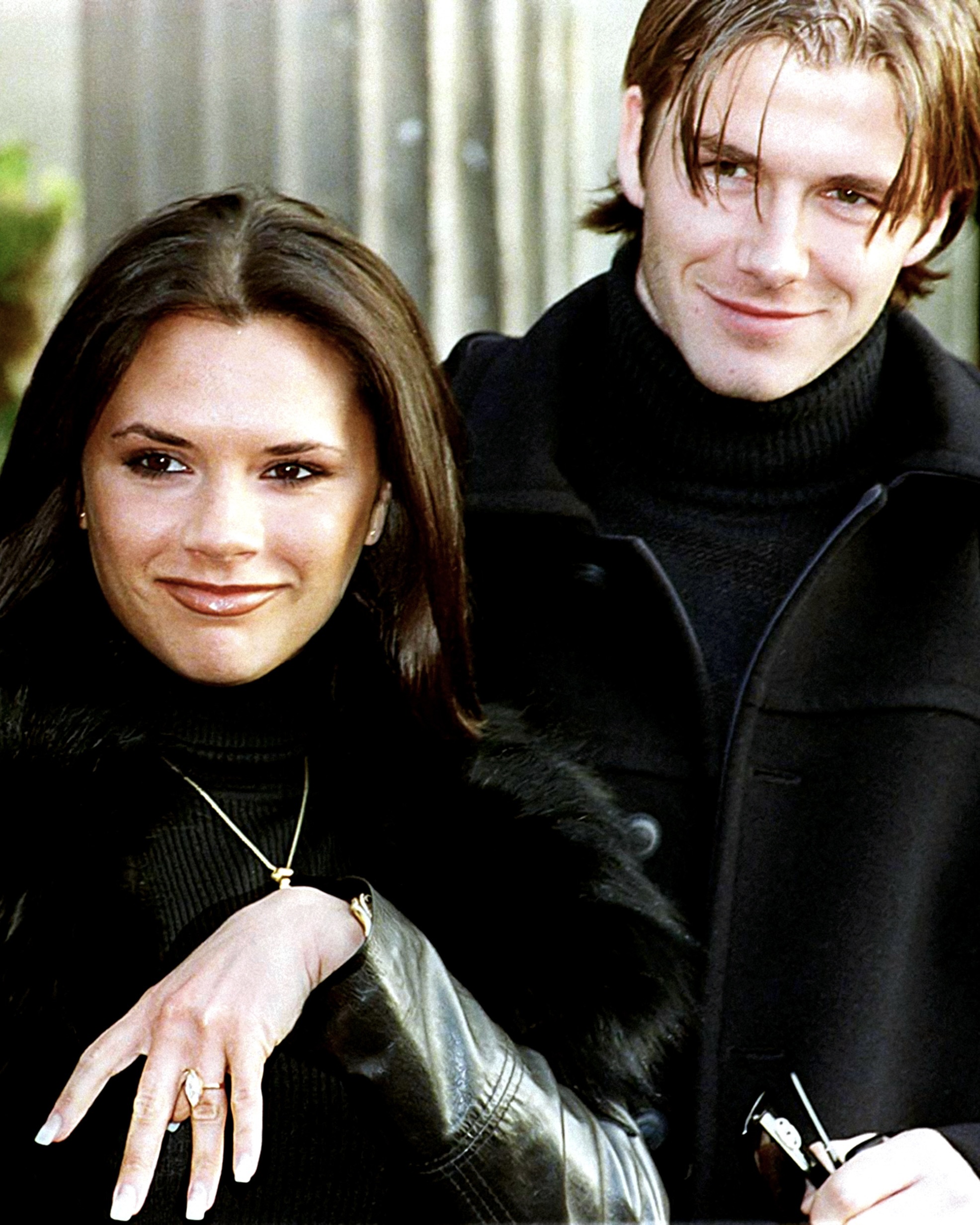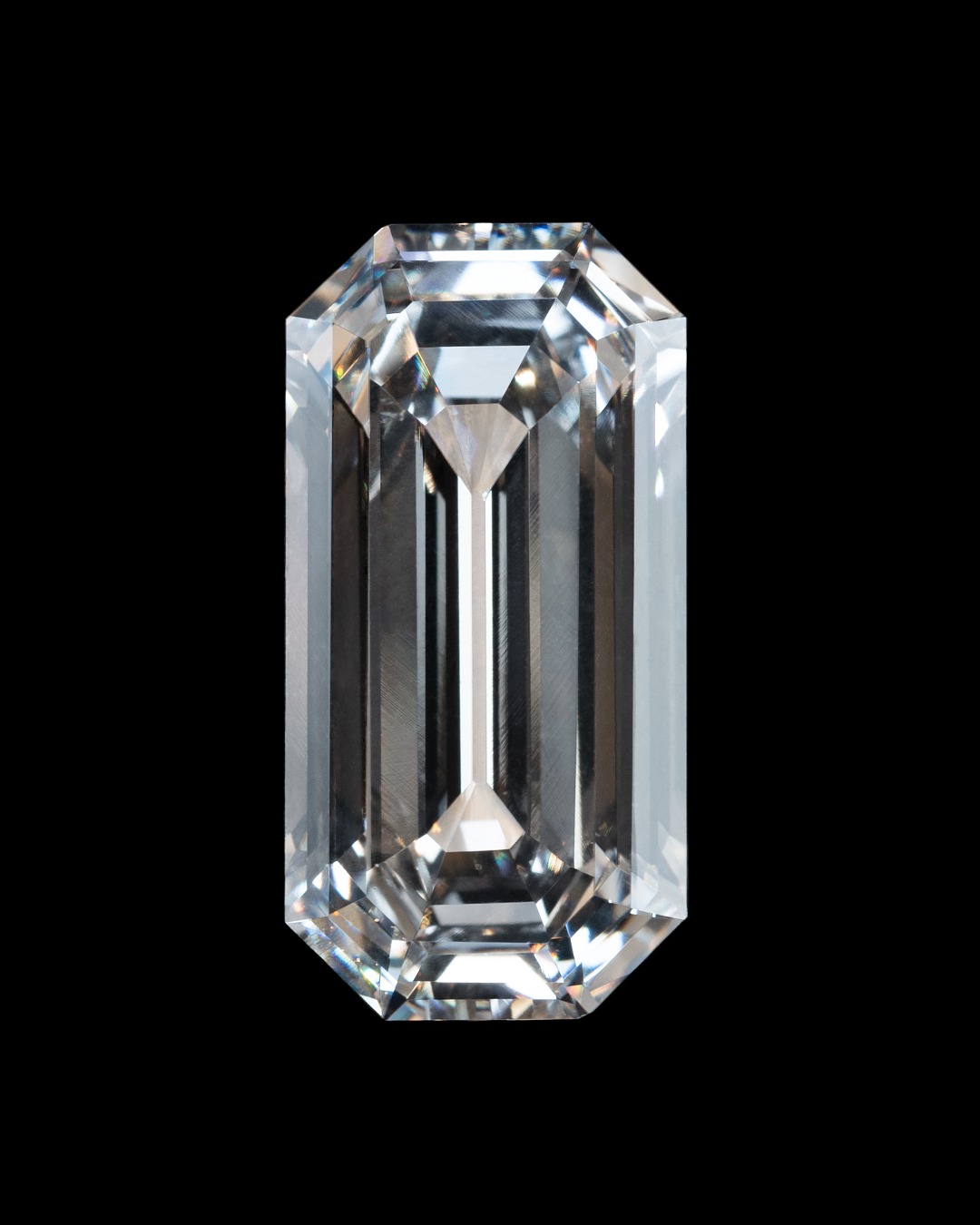Reena Ahluwalia’s Diamond Clad Paintings of Royalty Find Eternal Home
The artist hand paints each canvas celebrating the unbroken jewelry heritage of India.
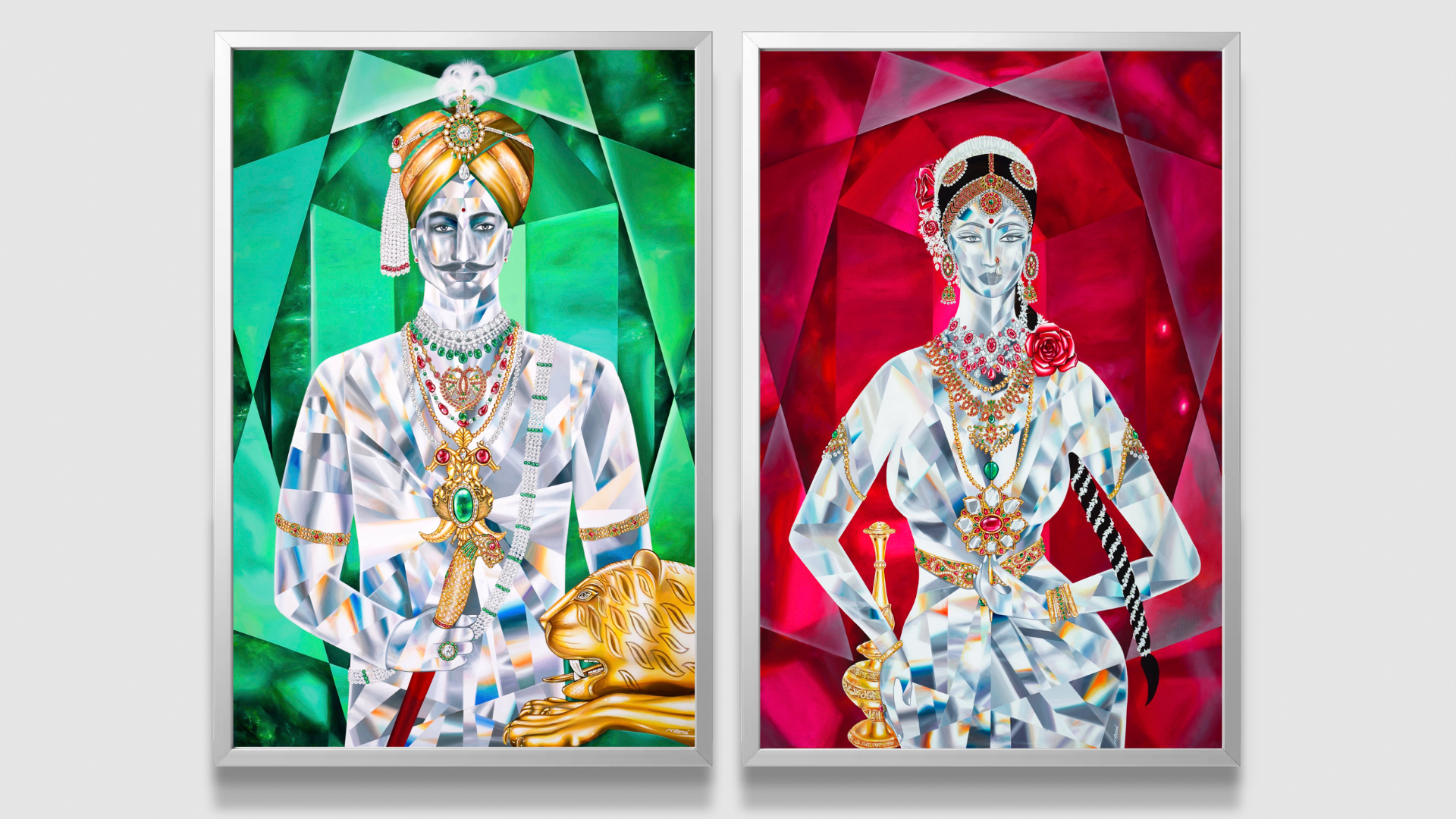

In the realm where art and diamonds converge, few artists have been more influential than Reena Ahluwalia. Her latest paintings capture the essence of cultural heritage, personal identity, history, and epic diamond jewelry more than most could dream. The celebrated artist and Guinness world record-holding jewelry designer has unveiled these gem-encrusted portrayals of the Maharaja and Maharani of Royal Mysore and announced their acquisition by the C. Krishniah Chetty Crystal Museum in India. These works are not just paintings; they are a vibrant testament to the intertwining of our identities with the natural gems and jewels that adorn us and the reflection of the stories they carry.
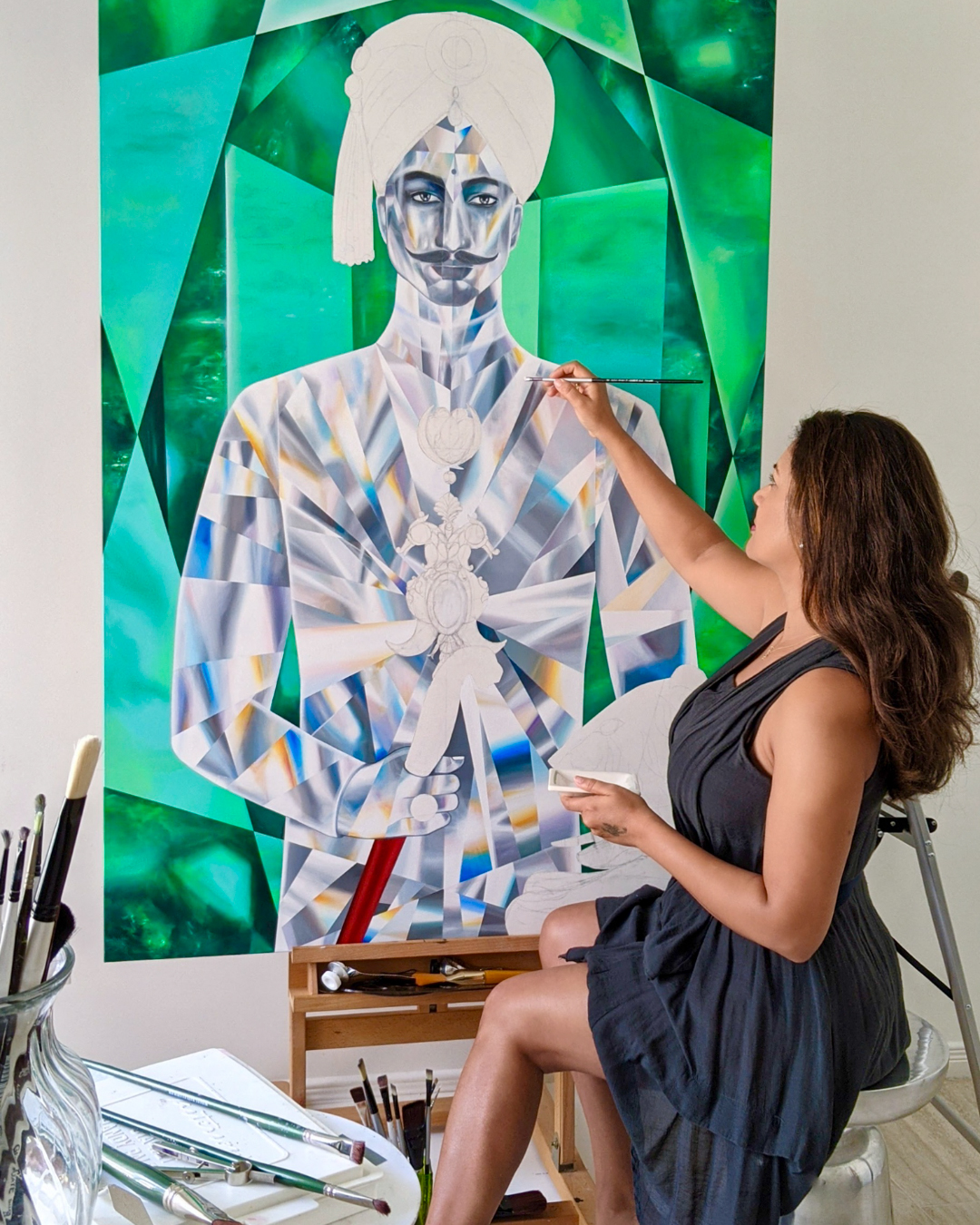
Ahluwalia’s inspiration for these opulent canvases stems from a deep fascination with the power of jewelry as a form of self-expression and identity. Her extensive historical research and artistic exploration of gems have culminated in these paintings, years in the making. By choosing royal portraiture, rich in nuance, history, and symbolism, Ahluwalia reconnects the splendor of the past with the present’s sensibilities, crafting a narrative that resonates across time.
The paintings, each measuring 60 x 40 inches and meticulously hand-painted on canvas, celebrate the unbroken jewelry heritage of India and the enduring significance of these gems in the cultural tapestry. The Maharaja and Maharani are adorned with historically accurate jewels, their bodies clad in diamonds, showcasing the grandeur and elegance of the Kingdom of Mysore in India. Each piece tells a story of power, purity, and the rich history of Indian royalty.
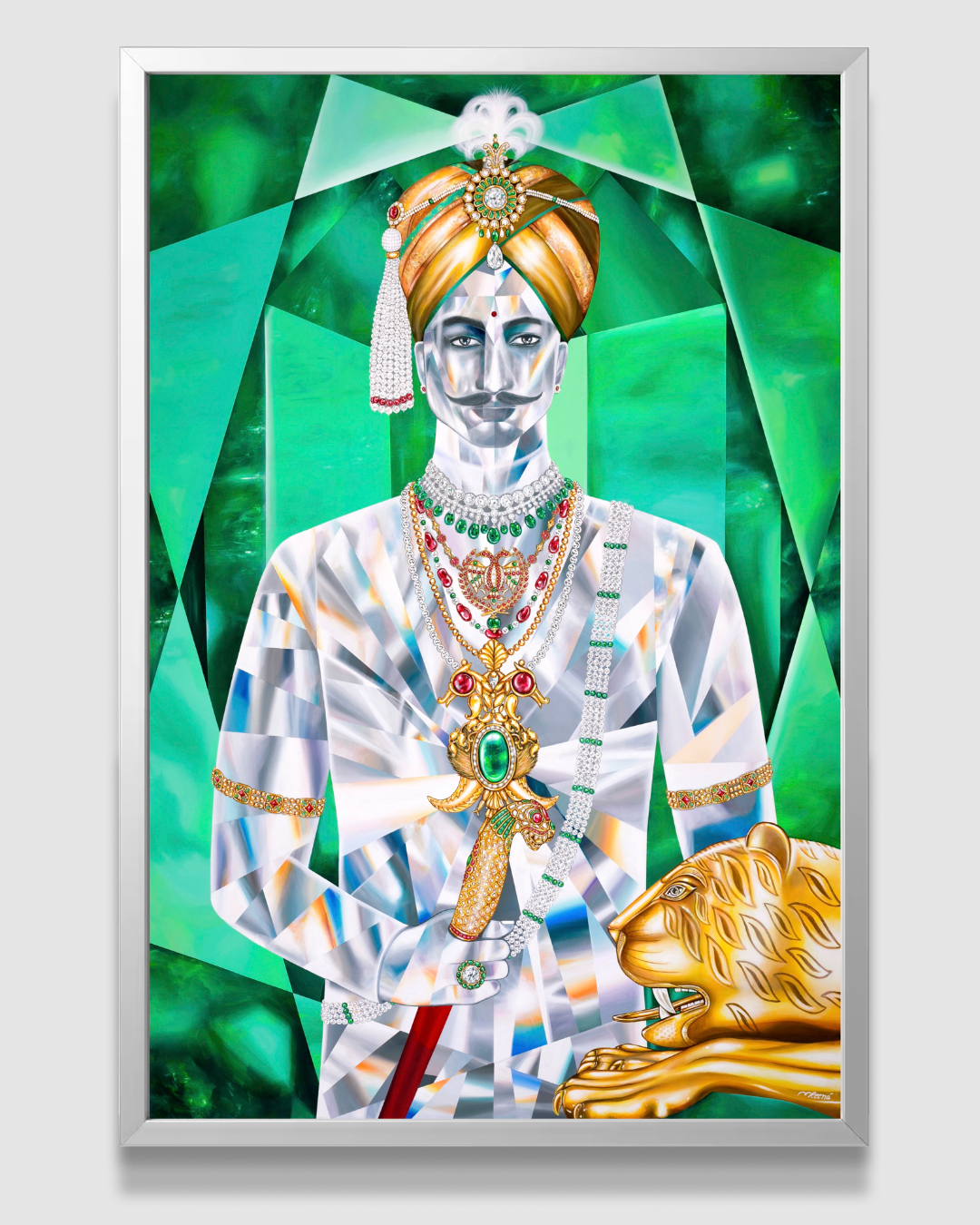
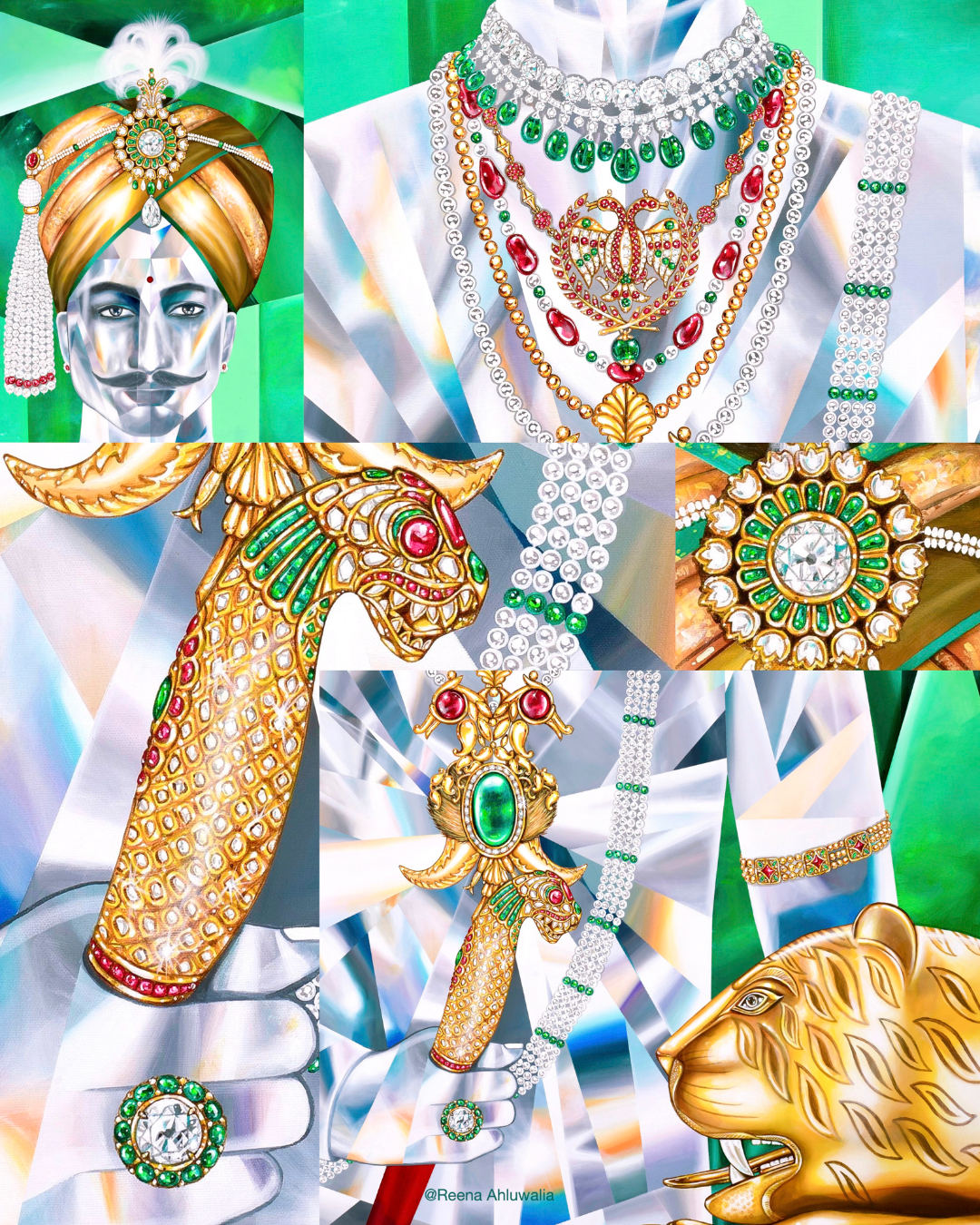
The portrait of the Maharaja of Mysore is detailed with a rich collection of historical jewels and gemstones. It features a necklace of old mine-cut diamonds from Golconda, India, paired with droplets of Colombian emeralds. Among the ornaments is a necklace strung with spinel beads from Badakhshan.
It also displays the prestigious Order of Gandaberunda necklace, embellished with Burmese rubies and natural diamonds, alongside a distinctive necklace combining a gold Gandaberunda (two-headed bird) with a tiger’s claw, enhanced by the natural fur of the tiger and a cabochon emerald.
The artwork also includes a lavishly gem-set dagger with a hilt shaped like a Yal (a mythical beast), dating back to the period between 1790 and 1810 in Mysore or Tanjore. Also depicted is a ring featuring a Golconda diamond encircled by Colombian emeralds, along with turban decorations crafted from Golconda diamonds, rubies, and pearls. The Maharaja’s regalia is completed with a full-body, multi-strand necklace of pearls and emeralds, a bicep band combining diamonds, rubies, and emeralds, and a significant gold tiger headpiece from Tipu Sultan’s throne, belonging to the Royal collection from 1785.
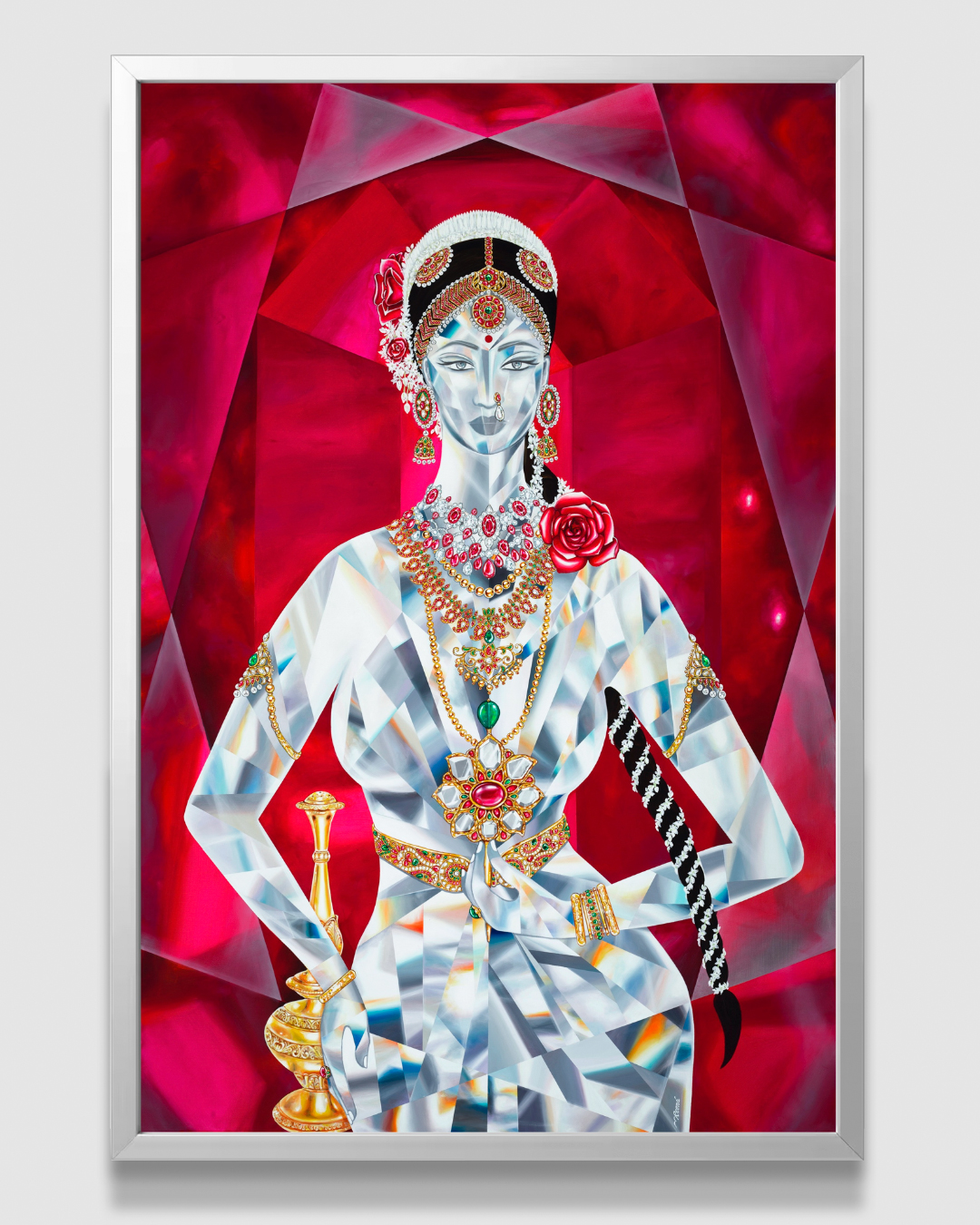
The painting of the Maharani of Mysore is also lavishly decorated with an array of historic gemstones and jewelry. It features headgear encrusted with natural diamonds, Burmese rubies, and Colombian emeralds. It includes earplugs from the 17th century, set with rubies and diamonds from the Al Sabah collection, and a magnificent necklace combining old mine-cut diamonds from Golconda with Burmese rubies. Also depicted is a Manga malai necklace with Burmese rubies, emeralds, and diamond slices in a Kundan setting from the 19th century. An 18th-century brooch featuring diamonds, rubies, and emeralds, gold bangles from the 17th to 18th century, a CKC gold rosewater sprinkler, and a gem-encrusted waistband gifted to Queen Alexandra by Chamarajendra Wadiyar X in 1875, further enrich the vibrant portrait.
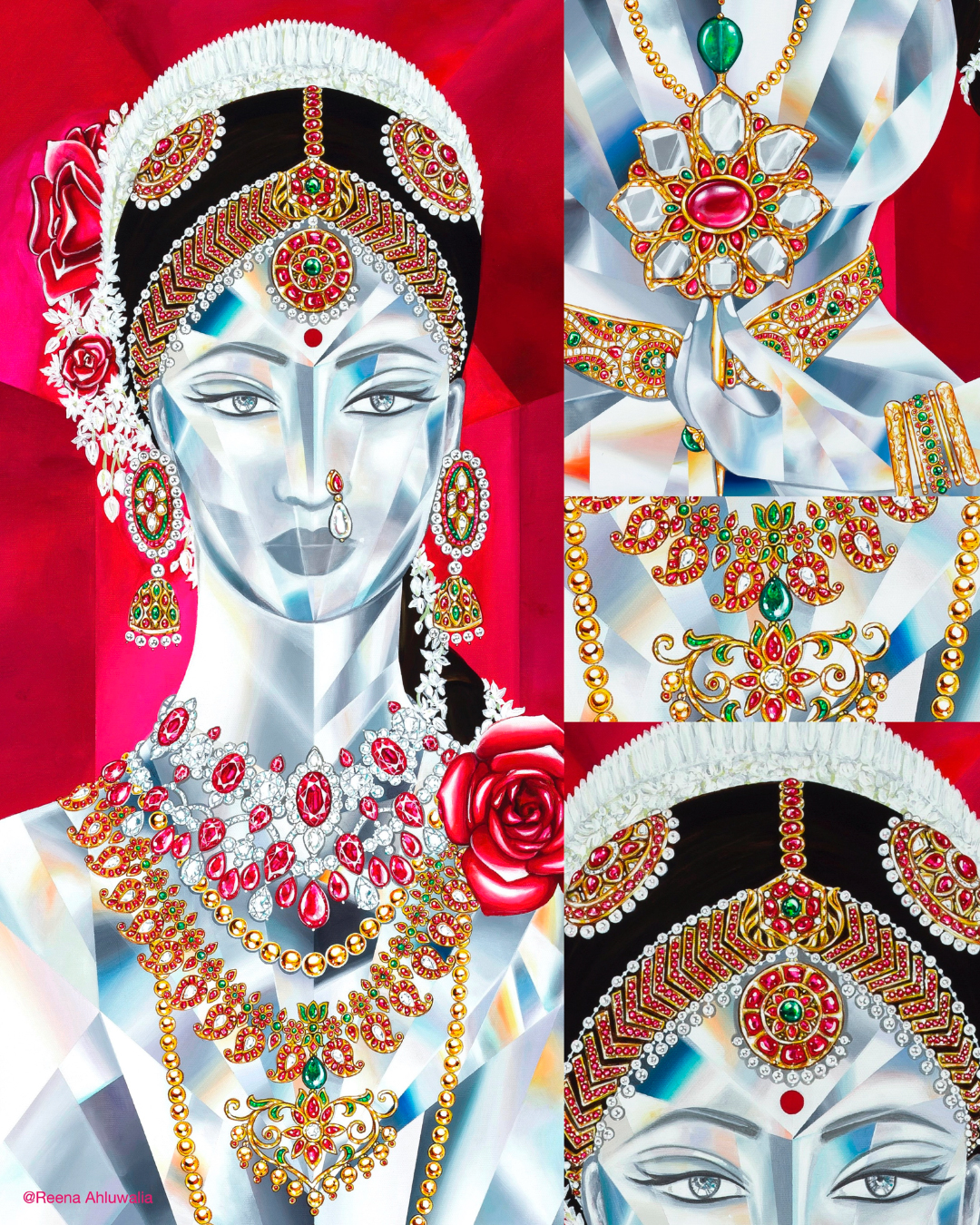
These masterpieces have found a fitting home at the C. Krishniah Chetty Crystal Museum in Bengaluru, India. This private museum is a treasure trove of art, gems, and jewelry history, focusing on the Deccan and Carnatic regions of Central and South India. The museum also celebrates the 150-year legacy of C. Krishniah Chetty Jewellers, famed for serving over twenty-one royal kingdoms in India, including the Kingdom of Mysore.
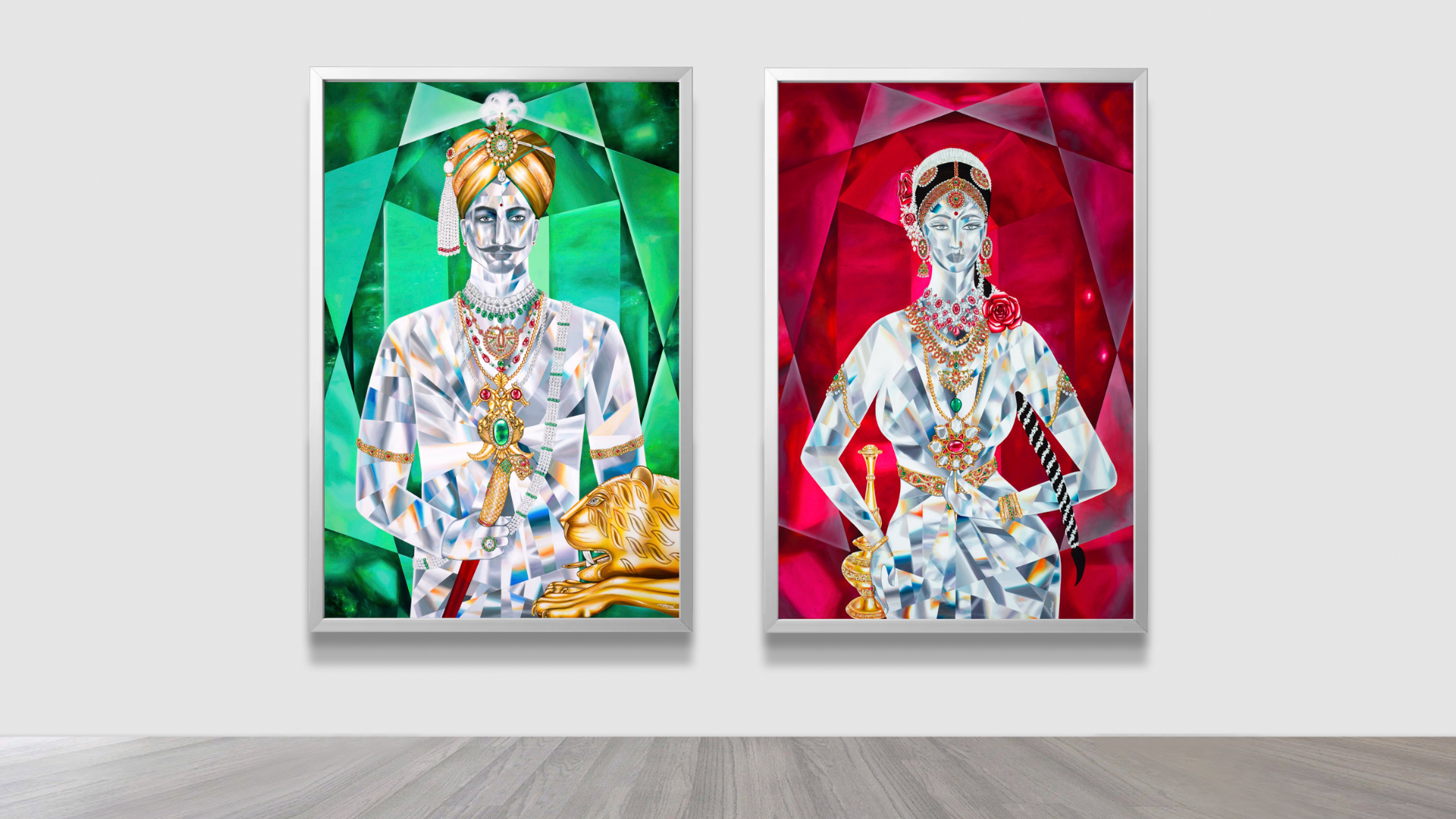
Dr. C. Vinod Hayagriv, an esteemed art connoisseur, collector, and one of India’s most celebrated jewelry icons, facilitated the acquisition of these paintings for the museum. His dedication to preserving and showcasing the rich heritage of Indian jewelry and art ensures that these paintings will inspire and enchant visitors for future generations.
Ahluwalia describes her work as a bridge between the past and the future, a reminder of the deep-rooted significance of natural gems in Indian culture. Once adorned by royalty and now part of museum collections or private ownership, these jewels symbolize more than opulence—they carry history, culture, and personal empowerment. Through her art, Ahluwalia invites us to reflect on our brilliance, seeing ourselves as the modern-day Maharajas and Maharanis of our lives, resilient and radiant like the gemstones that have withstood the pressures of time to reveal their true beauty.
In securing their place within the C. Krishniah Chetty Crystal Museum, these paintings guarantee that the legacy of the Maharaja and Maharani of Mysore and the timeless allure of the jewels that defined their reign will continue to captivate and inspire. Ahluwalia’s vision and artistry ensure that these royal figures’ history, heritage, and symbolic power will endure, inviting future generations to explore the rich tapestry of Indian culture and the personal narratives intertwined with its jewels.
